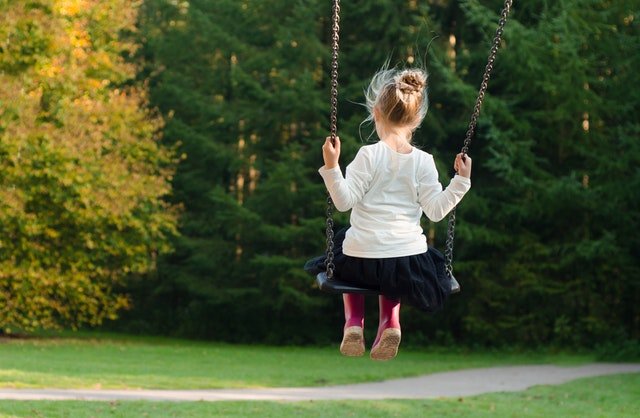How to Tune Your Senses Into Nature!
Everyone knows that being outside in nature is good for us! But have you ever considered whether you and your family are getting the most out of your time outdoors? Are you really working all of your senses to benefit from being outside in nature?
A study by Ramshini et al. (2018) showed that family-centered nature therapy helped reduce some sensory challenges in children with autism spectrum disorders. The children in this study showed significant improvements, especially in motion and touch based on The Sensory Evaluation Checklist pre- and post-test. Creating a hands-on activity outside can help increase your child’s ability to learn!
Children with unique sensory needs can especially benefit from spending a significant time outside, because of how nature tends to put our bodies and minds in a relaxed state. Below is a list of creative ideas that correspond to our different senses and how to help your child get in tune with theirs! Each of these activities is nature-based and can be used outdoors to help your child process the world around them. Check out this blog on nature and occupational therapy to learn more about the benefits of being in nature!
Sight:
Sky, star, and horizon gazing: Carry a pair of binoculars or visit a park with a viewfinder to take a look around. Look for constellations and interesting cloud shapes! Dr. Andrew Huberman, a neuroscientist at Stanford studied the impact of vision and stress on the body for over 20 years. He found that when our eyes look at something stressful or exciting, our field of vision tends to narrow with laser-sharp focus, and the rest of our field of vision blurs (Ferris, 2021). In contrast, when we expand our field of vision, our body is able to switch off that stress response. Allow your gaze to relax and take in a wider view and broaden your horizon!
Identify different plants, trees, and animals. If it's the right time of year, be on the lookout for butterfly chrysalises! Here is a link to 50 places where you can find monarch chrysalis.
Notice the changes in seasons with the leaves, have your child point out the different colors and shapes and identify them!
Watch for different insects and birds, catch and release fireflies at night or watch butterflies float through the air! Here's a link to the best butterfly and insect net!
Go outside to watch the weather change such as rain or snow. Stay on the porch or watch from a window to avoid overstimulation just in case. Talk about and have your child identify their properties!
Watch the sunrise or sunset with your child! Have them notice the differences between night and day, and have them identify the changing colors of the sky.
Touch:
Find puddles after a rainstorm! Have them feel the different temperatures of the water, how deep the puddle is, and how clear. Make splashes with your hands or feet! When their hands are wet make handprints on the ground.
Look for fallen bird nests from trees, and encourage your child to feel the texture and special markings!
Look for various sizes of rocks, pinecones, sticks, or leaves. Feel the different textures between them, and ask your child to label them large or small.
Visit your local berry farm or apple orchard to pick fruit! Feel the different textures between them, smooth, rough, etc. Here is a link to the 2023 harvest schedule and website for U-Pick farms in Minnesota!
Pick and identify different types of flowers, feel how soft the petals are, and how different the leaves and thorns feel.
Vestibular & Proprioceptive:
Go swing on a swing set!
Run, walk, or bike through a park or a trail. Have your child push their bike up hills!
Climb a tree or playground set!
Walk and balance on logs or large rocks.
Throw rocks or sticks in the water!
Smell:
Smell the flowers in your area, and compare them to different flowers!
Smell the fresh air!
Smell the rain after a rainstorm! Talk about how it differs from a sunny day.
Go to the grocery store or farmers market and smell the different fruits and identify them!
Hearing:
Take a walk and listen to the wind in the trees.
Listen to the birds, and try to distinguish them from each other by species. Here is a link to the 33 most common birds in Minnesota!
Sit by a creek or a lake and listen to the water.
Listen to the frogs and cicadas throughout the warmer months of the year!
All of these activities will give you and your family a great start to incorporating nature into your daily routine. In addition, there are a few things to be mindful of before you go out exploring to prevent sensory overload, if the area or park is noisy or tends to be muddy or wet. Research the area beforehand to determine if it will be a good fit for your child and their sensory needs. Bring extra clothes just in case they get dirty or wet while outside. Bring extra shoes and if needed a pair of headphones or ear muffs to make sure your child is comfortable.
Let your child explore on their own terms with thoughtful guidance if necessary. Be open and flexible to sudden changes in plans. Make the outdoors a fun place for them to be, the mud will wash off but the memories will last a lifetime!
References
Ferris, Tim. the tim ferris show. November 5th, 2021. How Panoramic Vision Can Reduce Your Stress and Anxiety, [Video]. Youtube. https://www.youtube.com/watch?v=dqCEOJSvgwA
Ramshini M, Karimi H , Hassan Zadeh S , Afrooz G , Hashemi Razini H , et al. The Effect of Family-Centered Nature Therapy on the Sensory Processing of Children with Autism Spectrum. Int J Sport Stud Hlth. 2018;1(4):e85506. https://doi.org/10.5812/intjssh.85506.
Cover photo - https://www.istockphoto.com/search/2/image?phrase=child%20in%20nature
Child and binocular photo- https://www.istockphoto.com/photos/child-binoculars
Swing photo - https://www.thechildcentre.com/could-your-childs-hypersensitivity-be-sensory-processing-disorder/
Picking flowers photo - https://www.istockphoto.com/photos/child-picking-flowers




